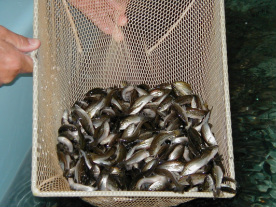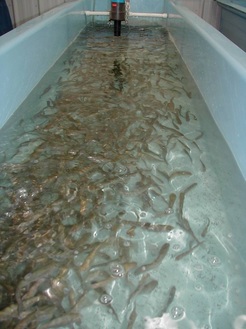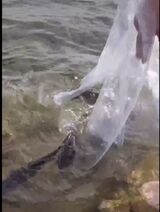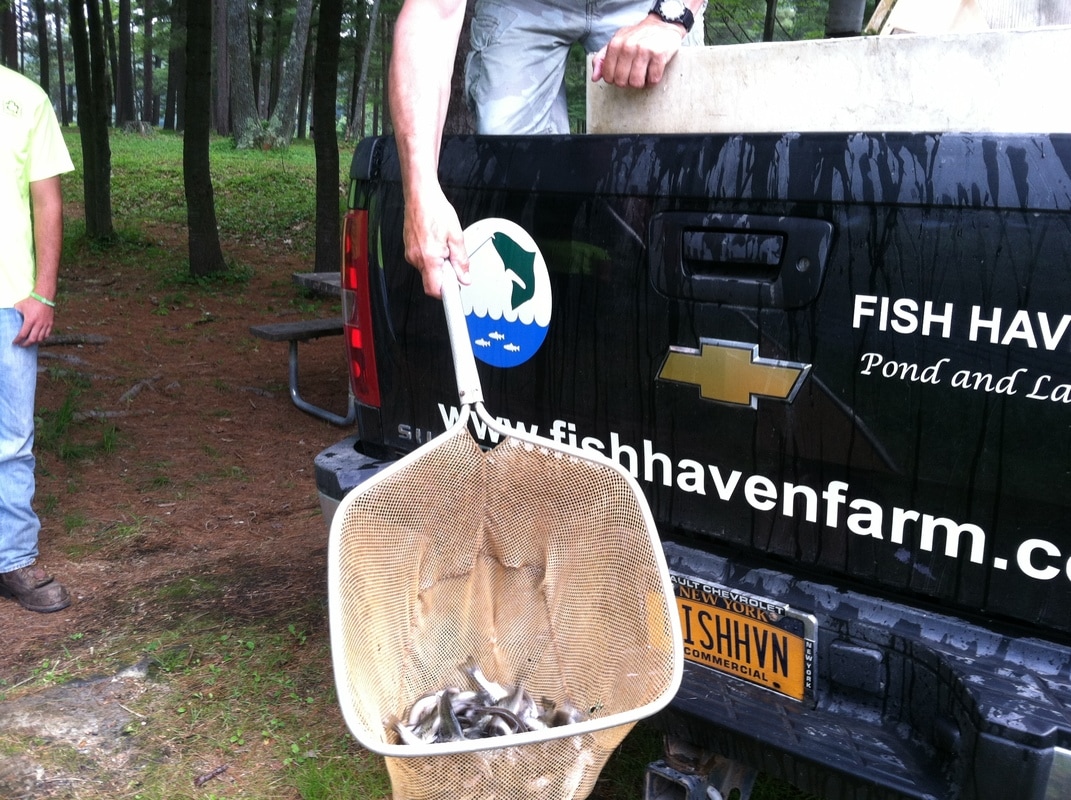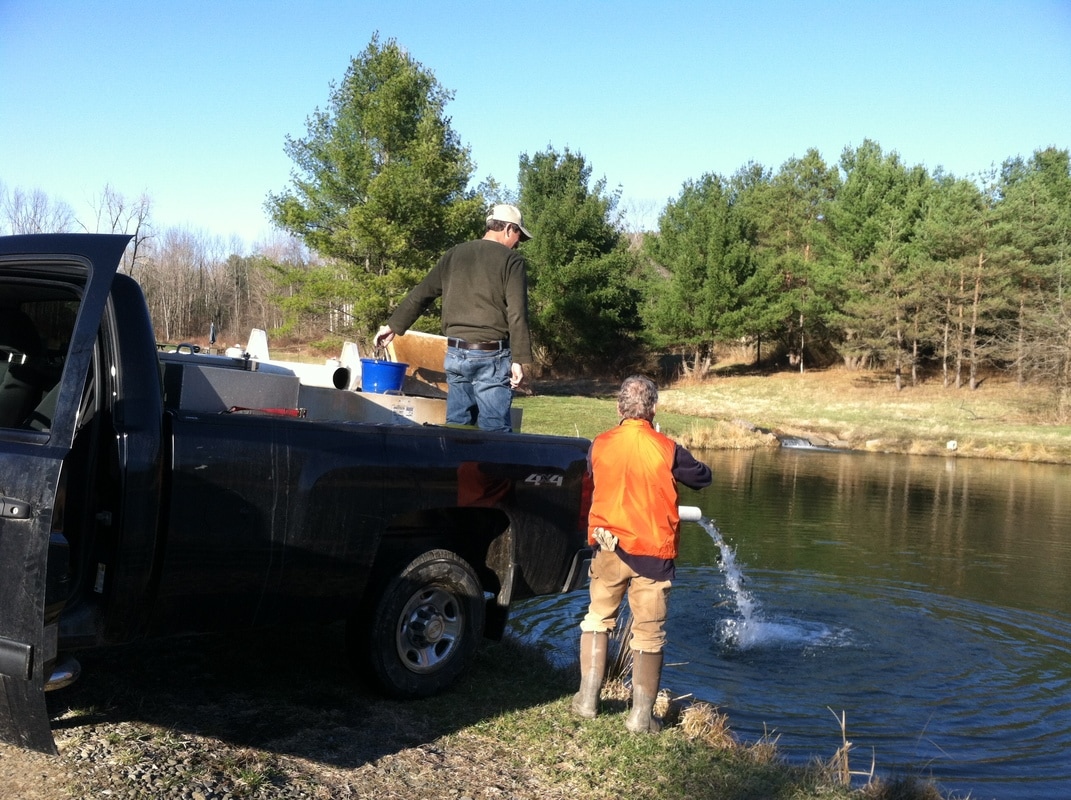HELPFUL RECOMMENDATIONS AND SUGGESTIONS FOR PROPERLY
STOCKING YOUR POND
The NY DEC authorizes free permits for fish stocking purposes:
- The farm fish pond license serves as a permit for stocking DEC approved and certified disease free fish for privately owned or leased ponds 10-acres or smaller.
- The fish stocking permit authorizes an individual to release DEC approved and certified disease free fish into waters of New York State, including ponds larger than 10 acres.
- Return completed forms to your regional DEC office.
Effective Jan. 1, 2024, anyone engaged in stocking fish into Commonwealth waters (except closed water circulation ornamental ponds/landscape features) must notify the PA Fish & Boat Commission (PFBC) by way of Notice of Stocking (NOS).
- Notice of Stocking webpage, includes links to instructions for online application, video of online instructions, and fillable or paper form
- Notice of Stocking FAQs from the Pennsylvania Fish and Boat Commission website
|
Stocking Recommendations Suggestions for kinds of fish to stock are based on factors such as the pond owner's preferences, depth and surface area of the pond, and water supply. Stocking quantity indications are per acre and can be adjusted according to the size of your pond or combinations of species. Recommendations provided are the maximum number based on space, oxygen, and food requirements. Most of our fish can be combined in the same pond and there is no minimum purchase quantity. |
Breeding & Spawning Some of the fish we sell will naturally propagate in a pond environment. Others may breed with some assistance from you, by creating structures that simulate what occurs in nature. Trout and walleye are unlikely to spawn in a normal pond setting. More spawning information can be found on the SPECIES page. |
Growth Rates The average growth rate for most of the fish we sell is 1/2" per month. This is based on an adequate amount of food and space. If fish are being fed pellet food or there is an abundance of forage species, such as minnows, growth rates may increase to an inch every month. |
Disease Inspection Certification
Beginning in 2007, New York State and Pennsylvania implemented disease inspection requirements for fish species as a result of a federal declaration related to viral hemorrhagic septicemia (VHS). These requirements were enacted on fish that are sold, transported, or stocked in any waters, including private ponds or lakes. The laws require eight inspections on trout and five for other species. Fish sold at Fish Haven Farm are certified from: VHS, spring viremia carp virus, furunculosis, enteric red mouth, IPN, whirling disease, IHN, and bacterial kidney disease. Customers are provided with proof of certification when purchasing fish.
Beginning in 2007, New York State and Pennsylvania implemented disease inspection requirements for fish species as a result of a federal declaration related to viral hemorrhagic septicemia (VHS). These requirements were enacted on fish that are sold, transported, or stocked in any waters, including private ponds or lakes. The laws require eight inspections on trout and five for other species. Fish sold at Fish Haven Farm are certified from: VHS, spring viremia carp virus, furunculosis, enteric red mouth, IPN, whirling disease, IHN, and bacterial kidney disease. Customers are provided with proof of certification when purchasing fish.
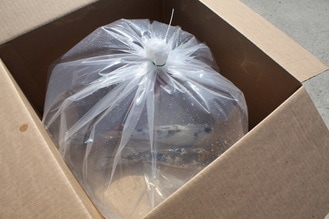
Picking Up and Transporting Your Fish
1. We provide boxes with bags, oxygen and water. Large box (16" x 16" x 10") $6 Medium box (10" x 14" x 10") $5 Small box (10" x 10" x 8") $4
2. You pick up with your own containers: typically coolers, sturdy plastic bins or totes. We provide chilled water for transportation so bringing pond water is unnecessary. Bag and oxygen (+your container) $3
1. We provide boxes with bags, oxygen and water. Large box (16" x 16" x 10") $6 Medium box (10" x 14" x 10") $5 Small box (10" x 10" x 8") $4
2. You pick up with your own containers: typically coolers, sturdy plastic bins or totes. We provide chilled water for transportation so bringing pond water is unnecessary. Bag and oxygen (+your container) $3
|
Transitioning Your New Fish Into the Pond
Acclimating fish into your pond is water temperature dependent. Fish can transition quickly into pond water that is within 10 degrees plus or minus the bag water. If the pond water temperature difference is greater, more care is needed. We suggest comparing the pond water to the bag water by hand after opening the bag and if the temperatures seem fairly close, dump in the fish. In the warmer months when the water temperature difference is greater, mix some of the pond water into the bag for a minute or two, then release the fish. You can scoop in some pond water with a pail or tip the open bag to add in the pond water. NOTE: Once the bag is opened, the pure oxygen has been vented which shortens the time the fish can remain crowded in the bag. For trout, this transition process is not recommended, so release them quickly in a deeper area of the pond. Trout require cooler temperatures which is the reason they are available for sale in the spring and fall months. |

